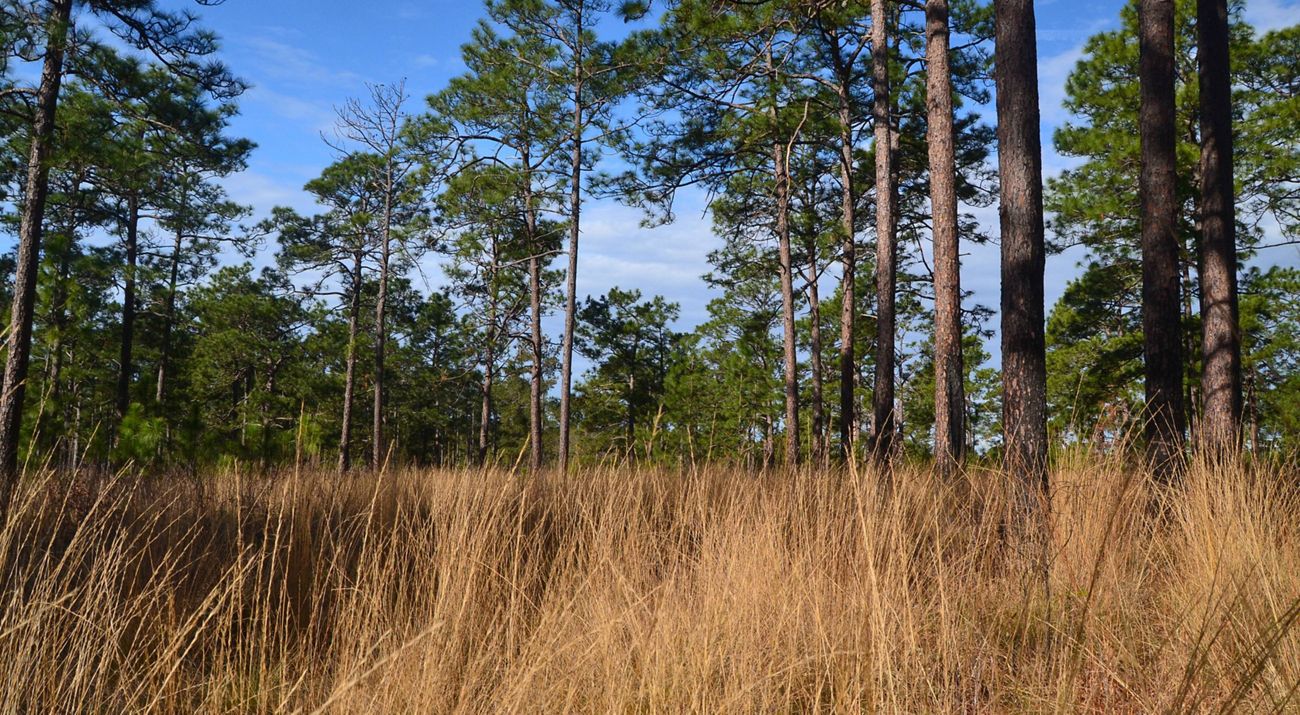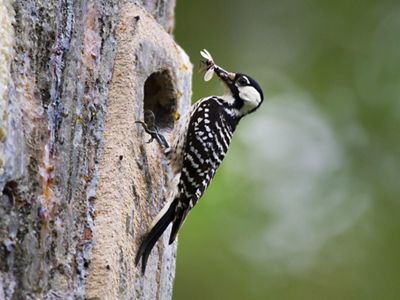
Water Conservation on Tap
Your support protected Groton Plantation, an important natural filter for Beaufort and Savannah’s drinking water.
With more than 170 people moving to South Carolina each day and development scrambling to keep pace, the lower Savannah River is among a dwindling number of places where you still can feel lost in nature.
Turn off your boat engine, silence your phone—there’s probably no reception anyway—and enter another world. Feel the thrumming of thousands of cicadas. Listen for the splash of a sunbathing turtle. Unleash your imagination to conjure the ghosts of the duck-billed dinosaurs and, much later, Civil War soldiers who once roamed these banks.
In the present day, these forests serve a vital role in protecting South Carolina’s drinking water, driving her economy and harboring game and non-game wildlife. Perhaps nowhere exemplifies those complementary roles better than Groton Plantation, the site of The Nature Conservancy’s largest private conservation easement—a whopping 13,868 acres of pristine longleaf pine forests, rolling sandhills and verdant wetlands.
Quote: Eric Krueger
One of the best ways to keep water clean is to protect the land that surrounds it.
The Science of Water
Residents of Savannah, GA, and Beaufort, SC, both draw their drinking water form the Savannah River. That’s more than 500,000 people—and growing.
The science behind clean drinking water is simple. The cleaner water is when it enters a treatment plant, the easier and cheaper it is to deliver clean, great-tasting water to homes and businesses that need it. Conversely, water that arrives downstream full of pollutants costs more to clean and filter.
It’s it the interest of both water utilities and ratepayers to keep drinking water sources clean. But how?
Protecting the Source of Drinking Water
“One of the best ways to keep water clean is to protect the land that surrounds it,” explains Eric Krueger, lead freshwater scientist for TNC in South Carolina.
Rain and runoff travel downhill to congregate in small streams, canals and creeks. Those smaller water sources come together into lakes or larger rivers, such as the Savannah.
“The path that water travels to its destination is important,” says Krueger. “Water that runs over parking lots, roads and farm fields can pick up sediment and pollutants. A buffer of trees between developed areas and the river can filter out those impurities.”

A Bigger Scale
Fortunately, much of the land along the Savannah River is still forested. The job of land trusts in this part of the state is to protect the buffers we have.
It’s still a tall order.
“Right now, we estimate that about 78% of the land that filters water for the Savannah River is forested,” says David Bishop, Midlands and coastal conservation director for TNC in South Carolina. “It’s a growing area, and some development is inevitable. We can afford to lose a little forest and still protect our water, but we can’t let it drop below 60 percent. That’s the magic number.”
The Largest Private Easement in South Carolina
In the battle to keep the Savannah River’s banks forested, the protection of large, contiguous tracts like Groton Plantation is key.
The conservation easement on Groton is the largest private easement in South Carolina’s history. It connects 125,000 acres of protected lands that span both sides of the Savannah River. Those include 7,438 acres of river and bottomland that also are part of Groton Plantation and previously were protected through an easement donated to TNC in 2002.
(A conservation easement is a voluntary, legally binding agreement limiting certain land uses, while protecting the property’s value for wildlife, forestry, hunting and other activities.)

Built for Birds
Groton’s forests also are part of a 50-mile corridor through which wildlife can roam without ever leaving protected lands. That wildlife includes one of the largest populations of red-cockaded woodpeckers on private land in South Carolina, as well as wild turkey, deer and bobwhite quail.
“Groton is ‘it’ for wild birds,” says Frank Range, longtime finance controller for the plantation. “We had a team from the Cornell Lab of Ornithology come out to survey a few years ago, and they said it was the most species of birds they’d ever catalogued in a one place in a single day.”
While many of the birds on Groton are wild, additional quail are brought in annually to support family and private club hunting on the property. Many of the stewardship activities undertaken to support those populations—including controlled burning, replanting of native longleaf pine and limiting development—also are what make the property so valuable for wildlife and water quality.
Restoring Forests
The conservation easement on Groton Plantation also allows for continued sustainable timber harvest on the property. Property managers have been changing over tree stands from planted loblolly to native longleaf pine, a premium timber market and the preferred tree for red-cockaded woodpeckers to nest.
“We want more mature longleaf pine on the plantation,” says Stuart Atkinson, plantation manager. “Longleaf gives us natural regeneration from wildfires, and it’s the natural state for this land.”
Collaborative Conservation
Projects like Groton Plantation are the result of incredible teamwork and a strong conservation ethic among South Carolina’s private citizens. The family-owned Groton Land Company donated more than 70 percent of the easement’s value.


